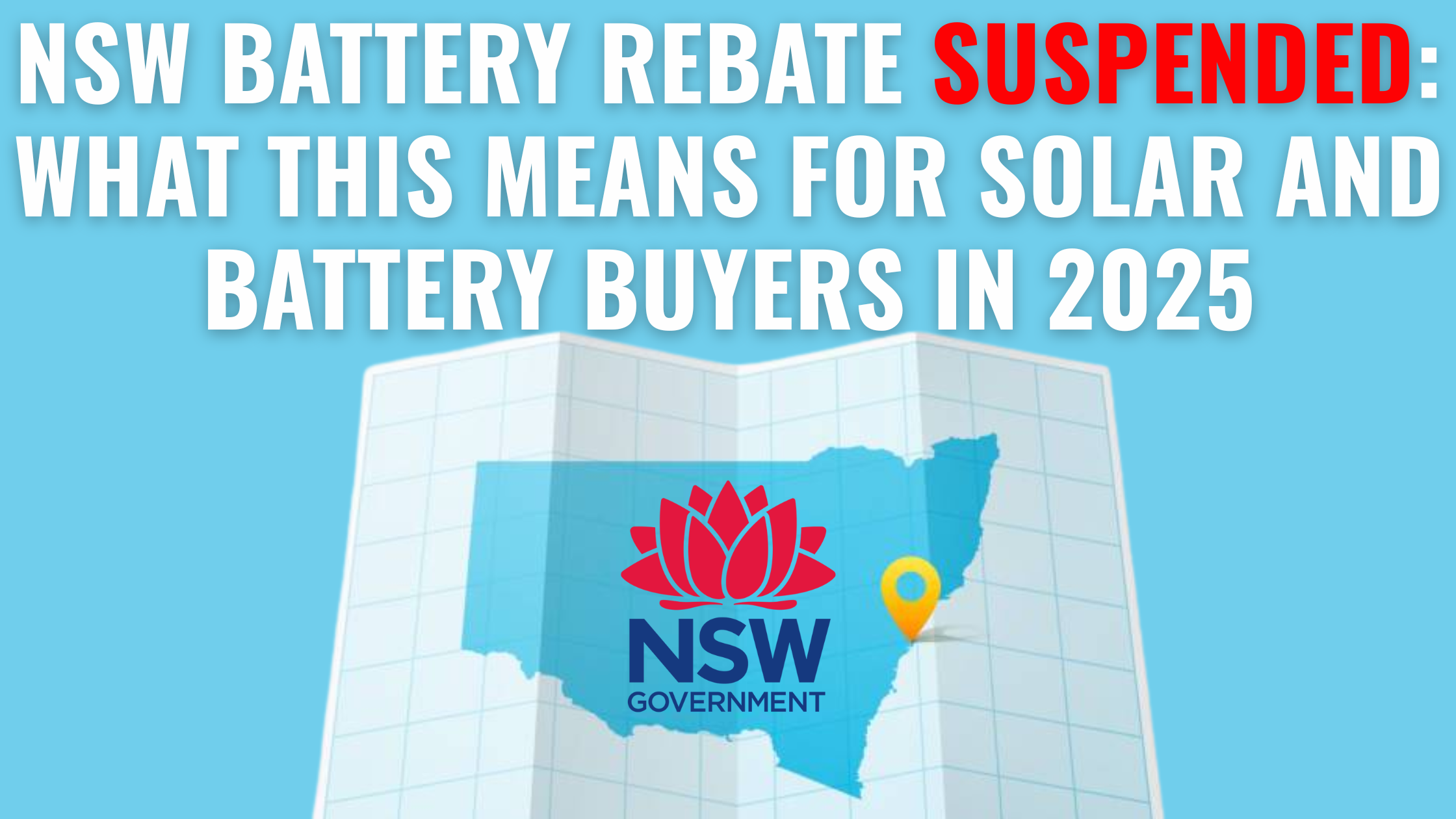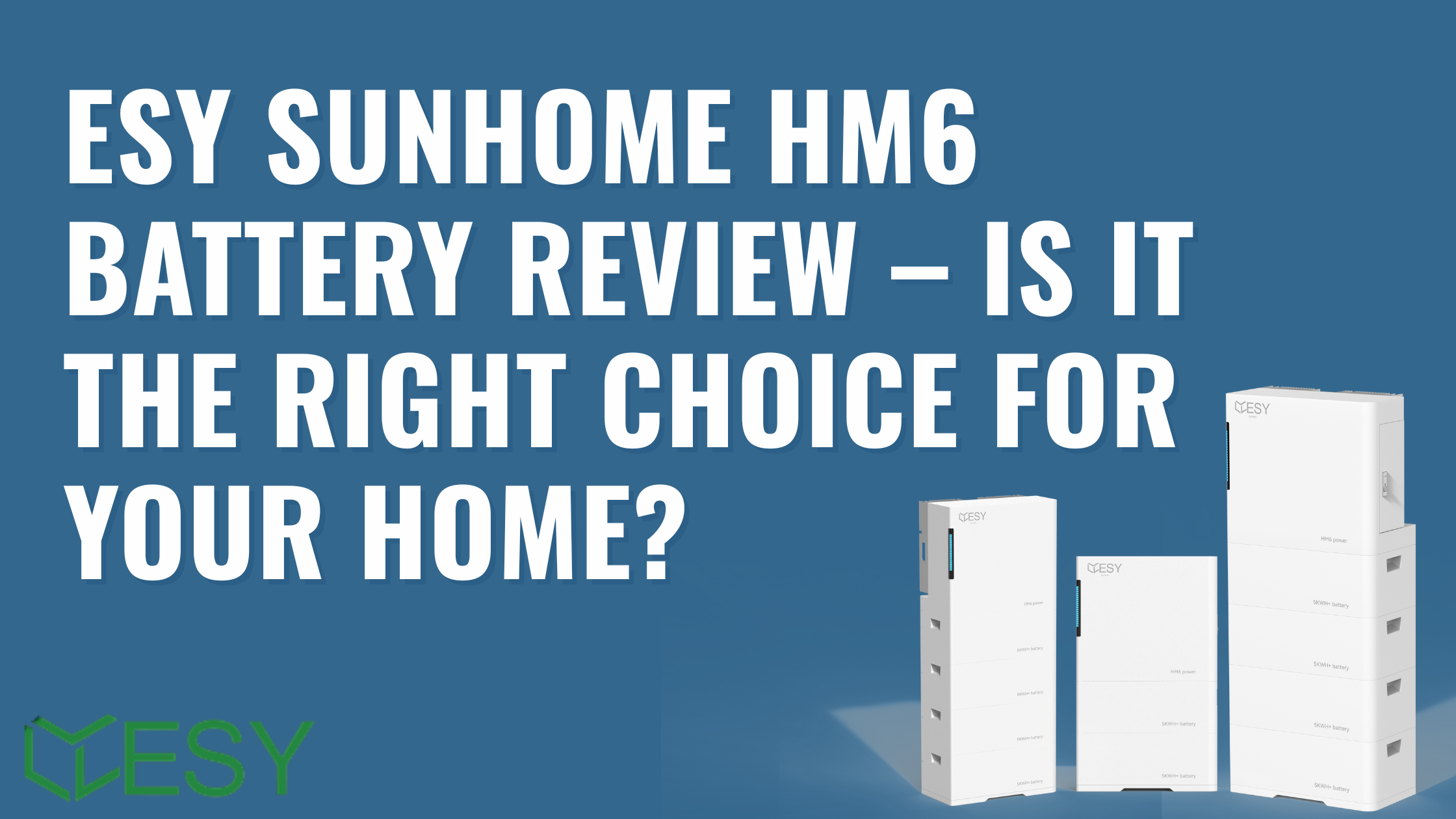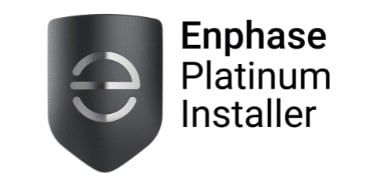
Written by Donna Wentworth
Last Updated: May 30, 2025
2025 Federal Solar Battery Rebate: What It Means for Australian Homes and Businesses
Please note: This article was published prior to the federal election. For information about the Federal Government’s solar battery rebate, please see our most recent blog titled Update: Clarifying the Stacking of Federal and NSW Battery Rebates.
Going solar has been viewed as unattainable for many Australians, specifically with the upfront cost being too high for most. However, come July 2025, that could all change.
The Federal Government has proposed a $2.3 billion rebate program. It is expected to cover up to 30% of home battery installations. If passed, this would be the most significant federal support for solar batteries in Australia to date.
If you are considering solar or adding battery storage, this may be the most significant opportunity in years (pending the election).

At Lenergy, we’ve helped thousands of Australians make smart, future-ready energy choices. In this guide, you will learn:
- What Is the 2025 Federal Solar Battery Rebate?
- What Are the Key Benefits of the 2025 Federal Solar Battery Rebate?
- How is the Federal Battery Rebate Calculated?
- How Much Can You Save with the 2025 Battery Rebates?
- Am I Eligible for the 2025 Federal Solar Battery Rebate?
- How Does the Rebate Work?
- Is the Rebate Guaranteed to Happen?
- What Should You Do to Prepare Between Now and July 2025 When the Government Solar Battery Rebate Starts?
- Frequently Asked Questions About the 2025 Federal Solar Battery Rebate
- Final Thoughts: Should You Wait or Act Now?
By the end, you will know exactly where you stand and what steps to take next before the demand surges.
What Is the 2025 Federal Solar Battery Rebate?
On Sunday, 6 April 2025, the Labor Government announced a new Federal rebate for home and business battery storage. The goal is to lower energy bills and improve the stability of the national grid.
If Labor wins the federal election on May 3, the rebate will begin on July 1, 2025.
Here are the key details:
- The rebate offers about $358 per kilowatt-hour (kWh) of installed battery storage.
- It applies to systems sized between 5kWh and 50kWh.
- It covers new solar and battery installations or battery additions to existing solar systems.
- It can be combined with the NSW Peak Demand Reduction Scheme (PDRS) for additional savings.
- The battery must be installed and switched on after July 1, 2025.
- It works as an upfront discount, similar to the way Small-scale Technology Certificates (STCs) reduce the cost of solar panels.
There is one critical limitation: you can only claim the rebate once. If you later decide you want a bigger battery, you will not receive additional federal support. This makes sizing your system correctly from the start very important.

What Are the Key Benefits of the 2025 Federal Solar Battery Rebate?
The proposed rebate offers more than just short-term savings. It creates a real opportunity to lower energy bills, increase energy independence, and future-proof your home or business. Here’s what you can expect if the program proceeds.
1. Up to 30% Off the Installed Cost of a Battery System
The rebate provides an upfront discount of around $350 per kilowatt-hour of usable battery capacity, which typically equates to about 30% off the total installed cost. For many households, this means saving thousands of dollars right away.
2. Significant Ongoing Savings on Electricity Bills
With the right system design, eligible homeowners could see up to 90% reductions in electricity bills. On average, this may amount to savings of up to $2,300 per year, depending on your energy usage and battery size.
3. Available to Homes, Small Businesses, and Community Facilities
The rebate is not limited to residential properties. Small businesses and community organisations are also eligible. For these sites, battery systems up to 50kWh are subsidised, and total system capacity (solar plus battery) can reach up to 100kWh.
4. Works With Existing or New Solar Installations
The rebate applies whether you are adding a battery to an existing rooftop solar system or installing both solar and storage at the same time. This makes it flexible for a wide range of households and businesses.
5. Designed for VPP-Ready Battery Systems
Only Virtual Power Plant (VPP)–capable batteries qualify. While participation in a VPP is not mandatory, the system must meet the technical requirements to be VPP-ready. This helps build a smarter, more stable energy grid for all Australians.
6. One Battery System Per Property
Each eligible property can claim one rebate-supported battery system. This includes rental properties or multiple sites owned by the same individual or business. If you own more than one property, you can apply for separate installations.
How is the Federal Battery Rebate Calculated?
The federal rebate works in conjunction with the STC rebate and is determined by the size of the usable battery capacity (kWh).
For every 1kWh of usable battery capacity, the system would be eligible for 9.3 STC’s (assuming installation occurs in 2025), with each STC valued at $38.50.
For example, the federal rebate generated for a 15.6kWh battery energy storage system would be calculated as per the following:
15.6kWh usable capacity X 9.3 STCs = 145 STC’s
145 STC’s X $38.50 = $5,582.50
By using this formula, you can get a reliable estimate of your potential rebate amount before committing to a battery installation. It’s a smart way to plan ahead and understand exactly how much you could save through the federal scheme if it gets implemented.
How Much Can You Save with the 2025 Battery Rebates?
Here is a clear look at potential savings when combining the federal rebate with the NSW PDRS where available.
Sigenergy SigenStor Rebates

| Number of Units | NSW PDRS Rebate | Federal Rebate | Total Rebate |
| 1 (8kWh) | $1,256 | $2,792 | $4,048 |
| 2 (16kWh) | $2,514 | $5,585 | $8,099 |
| 3 (24kWh) | $3,772 | $8,378 | $12,150 |
| 4 (32kWh) | NA (over 28kWh) | $11,171 | $11,171 |
| 5 (40kWh) | NA (over 28kWh) | $13,963 | $13,963 |
| 6 (48kWh) | NA (over 28kWh) | $16,756 | $16,756 |
Hinen Rebates

| Number of Units | NSW PDRS Rebate | Federal Rebate | Total Rebate |
| 1 (4.6kWh) | $740 | NA (below 5kWh) | $740 |
| 2 (9.2kWh) | $1,482 | $3,294 | $4,776 |
| 3 (13.8kWh) | $2,224 | $4,941 | $7,165 |
| 4 (18.4kWh) | $2,966 | $6,588 | $9,554 |
| 5 (23kWh) | $3,706 | $8,235 | $11,941 |
| 6 (27.6kWh) | $4,448 | $9,882 | $14,330 |
| 7 (32.2kWh) | NA (over 28kWh) | $11,529 | $11,529 |
| 8 (36.8kWh) | NA (over 28kWh) | $13,176 | $13,176 |
| 9 (41.4kWh) | NA (over 28kWh) | $14,823 | $14,823 |
| 10 (46kWh) | NA (over 28kWh) | $16,470 | $16,470 |
Tesla Powerwall 3 Rebates

| Number of Units | NSW PDRS Rebate | Federal Rebate | Total Rebate |
| 1 (13.5kWh) | $2,176 | $4,833 | $7,009 |
| 2 (27kWh) | $4,352 | $9,667 | $14,019 |
| 3 (40.5kWh) | NA (over 28kWh) | $14,501 | $14,501 |
| 4 (54kWh) | NA (over 28kWh) | $14,501 | $14,501 |
Please note: The NSW PDRS rebate caps at 28kWh. The federal rebate covers up to 50kWh. If you install a system larger than 28kWh, you still get the full federal rebate, but no additional state support beyond that threshold.
Am I Eligible for the 2025 Federal Solar Battery Rebate?
Eligibility for the proposed rebate is based on several key criteria. Here’s what you need to know before moving forward.
1. Your Battery Must Be Installed and Switched On After July 1, 2025.
You can begin planning and even install your system now, but the battery must not be turned on or commissioned until after July 1, 2025. This is a strict requirement. If your system is activated before that date, it will not qualify.
2. Your Battery Must Be Between 5kWh and 50kWh.
Only battery systems with a usable storage capacity between 5kWh and 50kWh are eligible. Systems smaller or larger than that range will not qualify under the proposed guidelines.
3. Your Battery Must Be VPP-Capable and CEC-Approved.
The battery must be compatible with a Virtual Power Plant (VPP) and listed on the Clean Energy Council’s (CEC) approved product list. If you are unsure whether your preferred product meets these criteria, our team can help confirm that for you.
4. You Can Only Claim the Rebate Once.
This rebate is a one-time opportunity. If you install a smaller system now and later decide to expand, you will not be able to claim additional rebate support for future upgrades. That’s why sizing your battery correctly from the start is critical.
5. You Must Be Located in Australia.
This is a federal program available to homeowners and small businesses anywhere in Australia. You do not need to live in New South Wales to qualify. However, NSW residents may also be eligible for additional rebates under the state’s Peak Demand Reduction Scheme (PDRS) — up to 28kWh of storage.
If you’re still unsure whether your setup meets the eligibility requirements, we encourage you to get in touch. We’ll assess your situation and walk you through your options, with no pressure to commit.
How Does the Rebate Work?
The proposed federal solar battery rebate will be delivered through the Small-scale Renewable Energy Scheme (SRES), using a system of tradable certificates to fund the upfront discount.
Here’s how it works if ever it gets implemented:
- Accredited installers, like Lenergy, will apply the rebate directly to your quote. You won’t need to manage the paperwork yourself.
- The installer will handle the certification process with the Clean Energy Regulator.
- Once your system is installed and commissioned, the government will buy back the certificates, ensuring the financial support flows through without impacting certificate prices.
The program is uncapped, meaning there is no national limit on the number of households or businesses that can participate. The rebate will be available until 2030, with annual reviews to adjust the subsidy levels in line with changes in battery market prices.
This structure ensures the rebate remains fair, responsive to market conditions, and easy for customers to access without delay or administrative burden.
Is the Rebate Guaranteed to Happen?
No, it is not guaranteed yet.

The 2025 solar battery rebate is an election promise. Labor must win the election on May 3 for the rebate to become law. If they lose, there may be no rebate, or it may take a different form under a new government.
Polls currently show Labor ahead, and there has been no public opposition to the battery rebate proposal. Still, elections are unpredictable.
Talking politics can be a little frowned upon, and we’re not going to tell you how to vote but we know who we’re definitely voting for… *whispers* Labor.
Lenergy is preparing for either outcome. We are offering customers flexible contracts that allow them to benefit if the rebate goes ahead, while protecting them if the political situation changes.
If you act now, you lock in pricing and your place in the installation queue. If you wait, you may be dealing with longer lead times and reduced savings.
What Should You Do to Prepare Between Now and July 2025 When the Government Solar Battery Rebate Starts?
Okay here’s where confusion starts. To be eligible, your battery system must be installed and turned on after July 1, 2025. Does this mean you need to wait until July to start the process? No, you can start as early as today.
Here is the safest path forward if you want to benefit:
- Get your system quoted and signed now.
- Install your battery before July 1, 2025.
- Delay commissioning (turning on) the battery until after July 1, to qualify under the new rebate rules.
By acting early, you protect your rebate eligibility and avoid the bottleneck of installs expected later this year.
If you wait until July to start planning, you may not be able to install until late 2025 or even 2026. That could mean losing thousands of dollars in potential savings.
It is important to know that if the federal rebate does not pass, you will still be responsible for the full cost of the system when it is commissioned.
Frequently Asked Questions About the 2025 Federal Solar Battery Rebate
Who is eligible for the rebate?
Any Australian homeowner or business installing a VPP-ready battery between 5kWh and 50kWh after July 1, 2025, can claim the rebate.
Can I combine the federal rebate with other programs?
Yes. You can combine the federal rebate with Small-scale Technology Certificates (STCs) for solar panels, and with the NSW Peak Demand Reduction Scheme (PDRS) rebate for batteries up to 28kWh, if you are located in New South Wales.
Can I install my battery now and still qualify?
Yes, but there are important conditions. Your battery can be physically installed before July 1, 2025, but it must not be commissioned or switched on until after that date. If you would like help navigating the timing, we encourage you to contact our team for assistance.
What if my battery is already installed?
If your battery has already been installed and commissioned before July 1, 2025, you are not eligible for the rebate. The rebate is intended only for systems installed and turned on after the program officially begins.
Can I add more battery capacity later and claim the rebate again?
No. The rebate is a one-time opportunity per installation. If you expand your battery storage after your original installation, the additional capacity will not be eligible for the rebate.
What types of batteries qualify?
Only batteries that are approved by the Clean Energy Council (CEC) and are sized between 5kWh and 50kWh will qualify for the rebate. If you are unsure whether your preferred product is eligible, please contact us for the latest approved list.
What if I live outside New South Wales?
If you are outside NSW, you will not have access to the NSW PDRS rebate. However, you are still eligible to claim the new federal rebate because it applies nationally.
Will the rebate decrease over time like the STC program?
Yes. If it is legislated, the federal rebate will begin on July 1, 2025, and then reduce each year until 2030. The earlier you install and commission your battery system, the higher your potential rebate amount will be.
Final Thoughts: Should You Wait or Act Now?

The proposed 2025 federal battery rebate is one of the most promising opportunities for Australians looking to invest in energy storage.
However, it is not risk-free. It is not guaranteed yet.
If Labor wins the federal election on May 3, the rebate will move forward. If they do not, the rebate may not happen at all.
However, If you wait until after the election to act, there is a risk you may miss out entirely, or face long delays as installation schedules fill up.
How Lenergy is Preparing Its Customers
At Lenergy, we are quoting and installing systems now in preparation for the rebate. However, we are delaying commissioning the systems until after July 1, 2025, to ensure customers remain eligible.
This approach protects your rebate eligibility, locks in today’s pricing, and secures your place in our installation schedule before the expected surge in demand. If the rebate program is delayed or does not proceed, we will communicate openly with every customer and adjust accordingly.
Our focus is on protecting your investment, not pressuring you into decisions.
Why You Need to Take Advantage of this Opportunity Today
This rebate is about more than saving money. It is an opportunity to reduce your energy bills, strengthen your energy security, and improve your return on solar investments.
It is one of the most significant policy steps toward making home battery storage more accessible in Australia. If you are looking for greater energy independence, protection from rising electricity prices, or simply better long-term savings, acting now gives you the strongest position.
At Lenergy, we are committed to helping you navigate this opportunity with clarity, honesty, and expert support.

If you are ready to explore your options, we are here to help.







